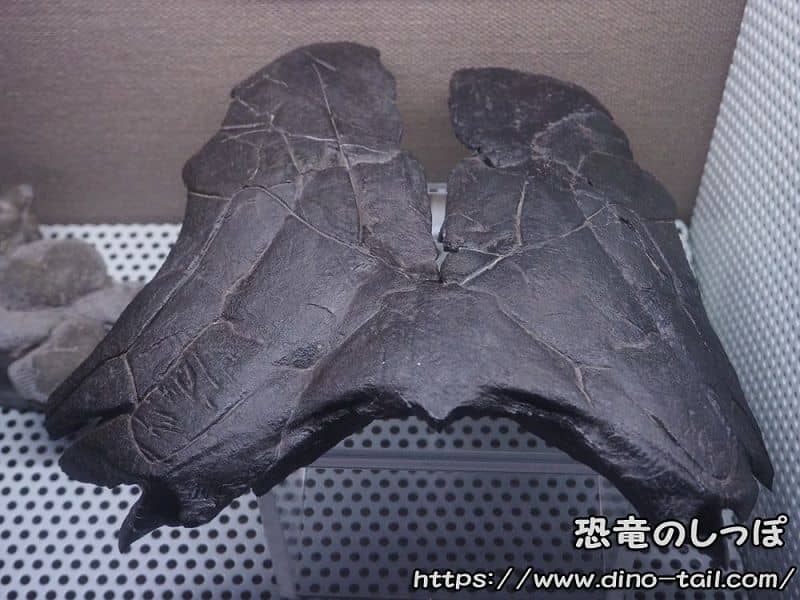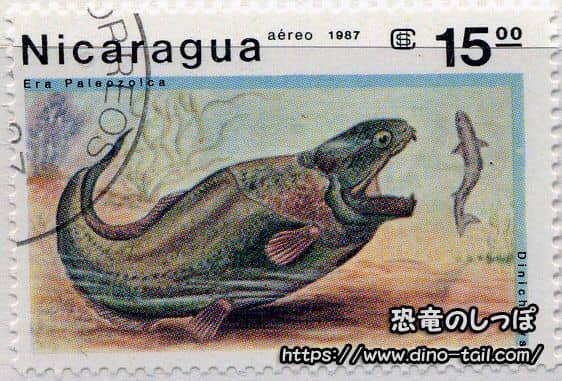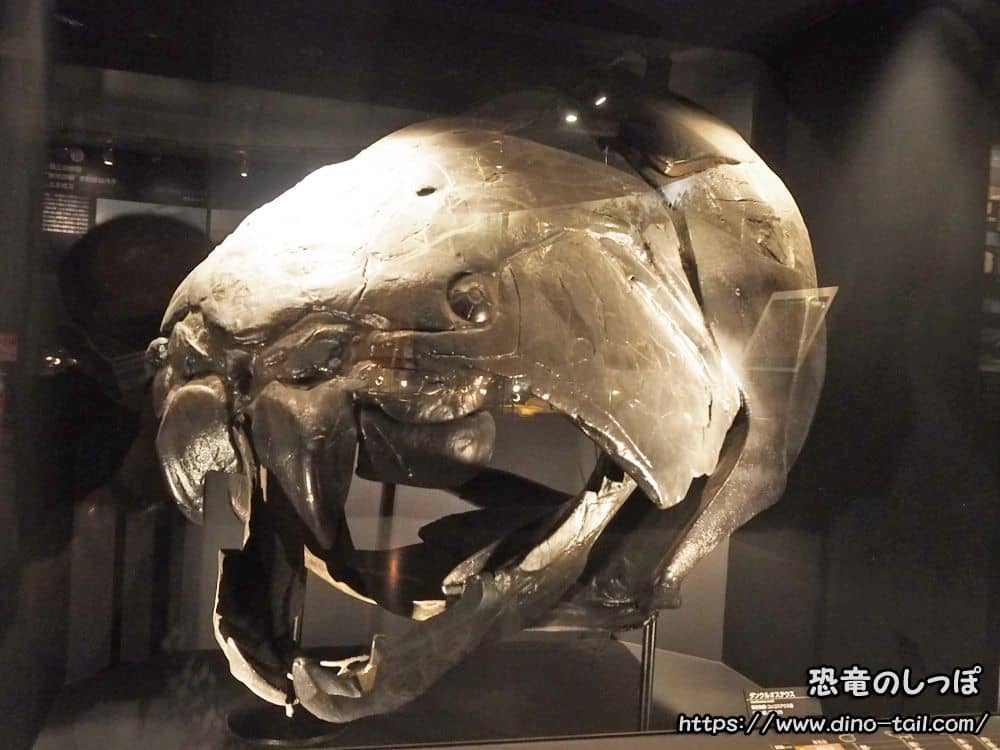About Dunkleosteus
| Scientific Name (Genus) | Dunkleosteus |
| Classification | Placodermi, Arthrodira, Dinichthyidae |
| Total Length | Approx. 8m |
| Diet | Carnivorous |
| Period | Late Devonian (approx. 382 - 358 million years ago) |
| Sub-classification / Species Name | Dunkleosteus terrelli (Type species) |
| Year of Paper Publication | 1956 |
Features: The Absolute King of the Devonian Sea
Dunkleosteus was a giant predatory fish belonging to the placoderms that reigned in the Late Devonian sea. Its appearance is undergoing a major change due to recent research.
The Illusion of a "Shark's Body"

Ibaraki Nature Museum
Since only the hard armored plates of its head have been preserved as fossils, Dunkleosteus has long been imaginatively reconstructed with a sleek, streamlined body like a shark. However, the latest research in 2023, based on comparisons with other placoderms for which body fossils have been found, has shown that it likely had a shorter, stockier body, similar to modern tuna or groupers .
Based on this reconstruction, even the largest individuals are estimated to have been less than 8 meters long, but their body shape suggests they were ambush predators rather than long-distance swimmers.
Self-Sharpening "Scissors"
Dunkleosteus did not have "teeth" like modern fish. Instead, the armored plates of its head itself formed razor-sharp blades. Even more surprisingly, it has been found that these bone blades had a "self-sharpening" function, where the upper and lower blades would rub against each other each time the mouth opened and closed, constantly maintaining their sharpness . It was like a giant pair of scissors that could cut through prey, bones and all.
It was formerly called "Dinichthys."
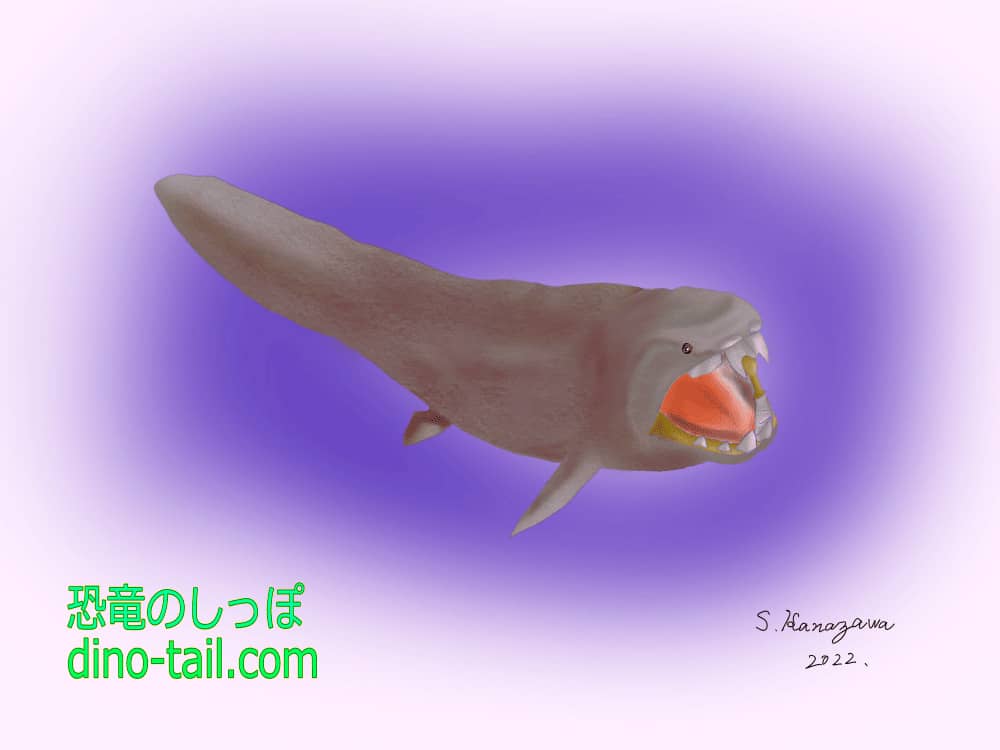
Ecology and Extinction
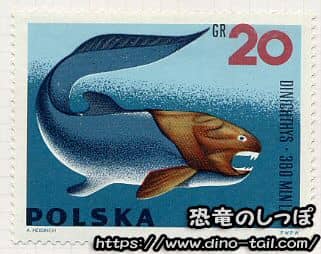
According to a 2007 study by the University of Chicago, Dunkleosteus had a bite force of up to 5,300 N, which was one of the strongest in history, far exceeding that of great white sharks and crocodiles. With this powerful jaw, it is thought to have preyed on everything, including other placoderms, early sharks, and hard-shelled ammonites. In fact, fossils with bite marks from other Dunkleosteus have been found, suggesting that cannibalism was a regular occurrence.
Since it had no teeth in its mouth and could not chew, it seems to have swallowed torn-off chunks of meat whole and spat out indigestible bones.
Although Dunkleosteus reigned at the top of the Devonian marine ecosystem, its dominance did not last long. About 359 million years ago, the placoderms, along with many other marine organisms, disappeared from the stage of history due to the "Late Devonian mass extinction" caused by global environmental changes.
Dunkleosteus Stamp and Fossil Gallery
